What to do in case of poor-quality reception of a radio or TV signal
Last update: 1 November 2022
The transition from analogue to digital (DVB-T) television broadcasting has eliminated some of the quality degradation of the received signals - shown mainly by noise and reflections (so-called "ghosts") in the picture. In the next phase, the transition to DVB-T2 broadcasting system resulted in an increase in the quality of the transmitted image (possibility of high-resolution broadcasting). However, in order to avoid signal degradation, it is necessary to ensure sufficient quality of the received TV signal even in the case of DVB-T2 and to eliminate possible interference caused by the operation of other equipment.
The most common causes of deterioration in the quality of the received TV or R signal
- the received signal has insufficient level or is of poor quality due to multipath propagation due to reflections from the surrounding terrain (insufficient signal coverage),
- the signal is shaded or degraded by reflections due to new construction of above-ground buildings and related construction activity in the surroundings of the television reception site,
- the use of poor quality receiving equipment (i.e. antenna, amplifier, antenna lead and receiver) or its improper installation or the failure of any of its parts,
- insufficient resilience of the receiving equipment to a strong signal from a nearby transmitter (e.g. mobile radio networks, in particular 4G and 5G, VHF or DAB radio, radar, etc.),
- the occurrence of abnormal radio wave propagation conditions (e.g. inversion) during a limited period of time by the reception of distant transmitters operating on the same channel.
Deterioration of TV signal reception quality
An interfered, poor quality or insufficient TV signal is shown as follows:
- pixelating or freezing of the picture,
- momentary loss or distortion (clicks) of sound,
- loss of picture and sound,
- failure or non-resetting of the programme (channel),
- picture and sound are not synchronised.
Should problems with the quality of reception arise or continue, CTU recommends proceeding as follows:
-
The listener (viewer) must always first check his own receiving set.
a. In the case of reception through an individual antenna:
- check the installation of the receiving equipment, in particular the outdoor antenna (its suitability for the channel received, its mechanical condition, fixing, direction and polarisation), amplifier (necessity and suitability of its use), antenna lead (integrity, correct connection, the use of balun) and actual set (faultless functioning and proper tuning to the received frequency);
- it is generally impossible to ensure quality reception using an indoor (room) or other substitute antenna;
- in the case of doubt, it is a good idea to ask neighbours in the area about the quality of reception.
b. In the case of reception through a common distribution system, i.e. television cable distribution or common antenna:
- check the integrity of the subscriber’s lead, including its proper connection, and the actual set (its faultless functioning and correct tuning to the received frequency);
- in the case of doubt, it is a good idea to ask neighbours about the quality of reception,
- if no fault is found to your own set in your apartment, contact the operator of the common distribution system, who will ensure that any faults to the common distribution system are eliminated.
If a set-top box or digital receiver does not work as normal within a short period of time, we recommend restarting it by taking out the power lead for a few minutes or re-tuning the received channels in the way described in the instructions of the manufacturer.
- In case the coverage of the territory by TV o R signal is insufficient, the authorities should request its improvement from the operator of the relevant TV or R programme, or from undertakings involoved in transmitting TV or R signals.
- In case of persistent problems with reduced reception and in case of faultless functioning of the receiver equipment of the listener (viewer) and the common distribution system (TKR or STA), you may ask CTU to identify the source of interference according to Section 100(6) of Electronic Communications Act. In the case of doubt, CTU may request the confirmation of a professional company as to the faultless nature of receiving equipment.
-
If problems arise due to extraordinary conditions for the radio wave propagation, especially during inversions (they always lasts for a limited period of time), the assistance cannot be provided except of re-tuning to receive a different channel, if possible.
No help is available should problems arise in connection with extraordinary conditions in the transmission of radio waves (always lasting for a limited period), apart from re-tuning to receive a different channel, if this is possible.
The locally-competent departments of CTU, whose addresses and contact details you will find in the Directory, receive and handle notifications of poor quality TV and radio reception. Viewers who have a problem with the quality of TV reception can also use the web form here (in CZ only).





